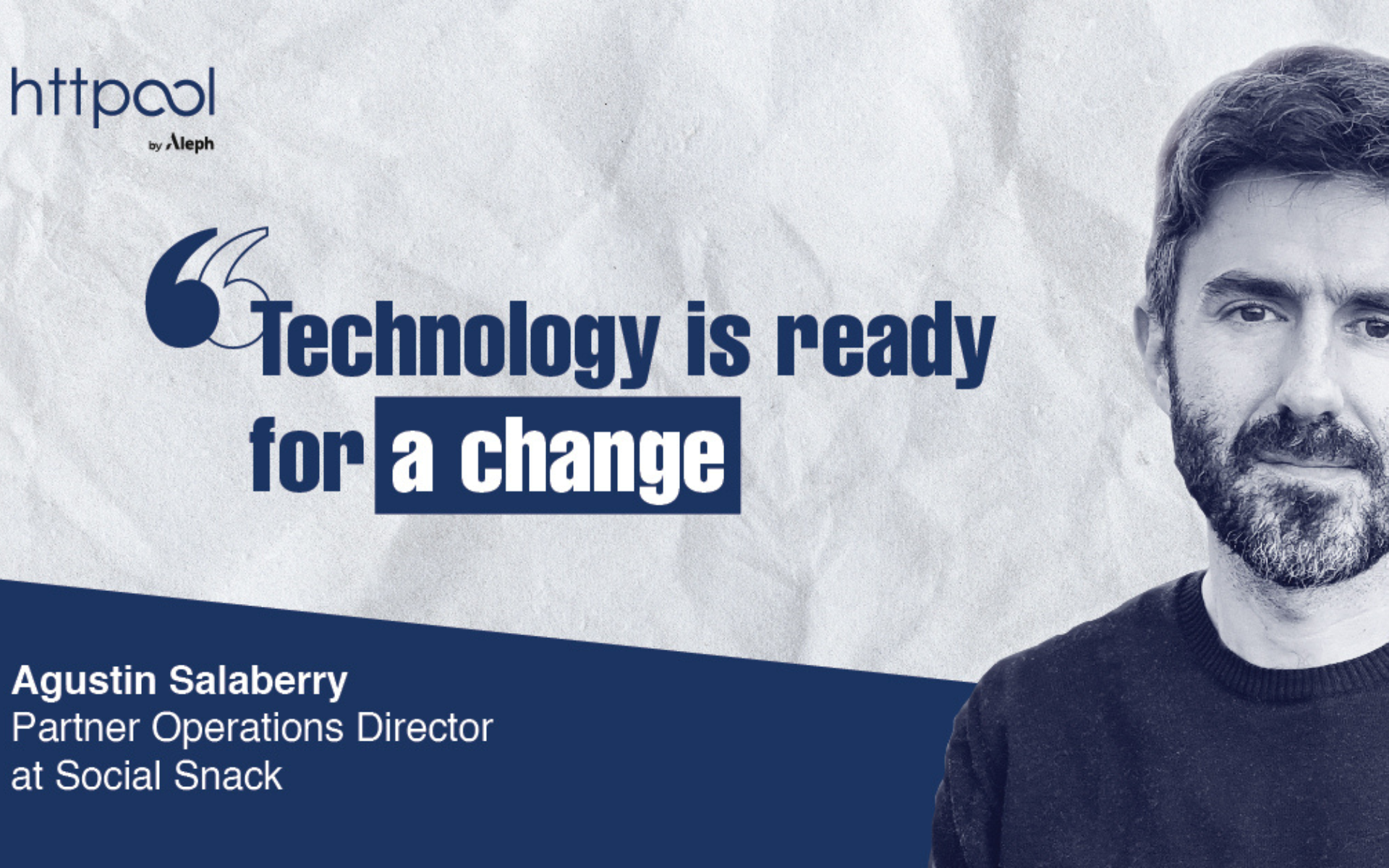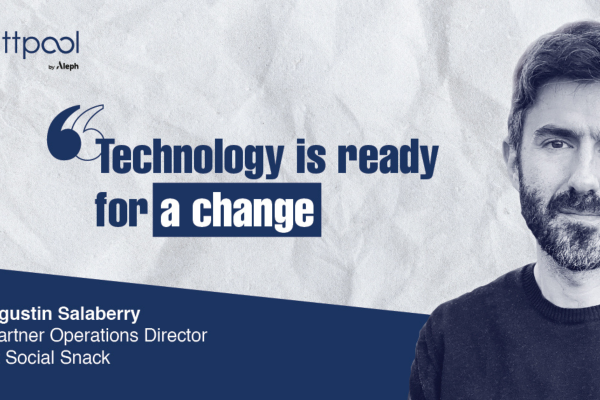
“Agustin, please tell us your thoughts on the rapid development of AR?”
Agustin: “I definitely believe the days when Augmented Reality (AR) was known only for its jaw dropping experiences are over, now the perception of bending technology is beginning to resonate as a fully profitable e-commerce channel. I’m sure there are millions of users already participating in AR whilst shopping, both in-store, and online. We really have reached the turning point, where AR is no longer a surprise, but simply a part of our reality.
I’m excited! I really think AR will undergo an irreversible resignification process, leveraged by global context, technology, users, and mostly the push of new business.”
“It is very exciting and at this point I’m not sure what to expect next, it’s all happening so fast. Do you think the shift has been hastened by the pandemic?”
Agustin: “Yes, in fact I believe in order to fully understand the context, it is imperative to go back in time, and focus on two significant events in particular. The first of which occurred March 11th, 2020, when the World Health Organisation announced Covid-19 had reached the ‘pandemic’ level classification. No specialist could have foreseen that the global digitization process would receive such an exponential acceleration, pushed by the sudden need to stay at home. With the introduction of digital platforms for teleworking, health and fitness, entertainment, and even education, to adapt to this new rhythm of life.”
Another big development we have seen is the announcement of the Metaverse. In October 2021 when Facebook rebranded to Meta, they left everyone’s head spinning with visions of the Metaverse. Leaving the eyes of the largest companies in the world searching for answers and direction, deciding where to place themselves in a digital world that practically was (and still is) in the making. What is your take on the Metaverse, do you think we are ready for it?”
Agustin: “Well, the Metaverse promises a digital space in which interactions between people and natively mixed enterprises can take place. This space comes with no clear boundaries as of yet, thus allowing users to work through avatars with Microsoft Teams’ Mesh, or complete citizenship in a governmental office, created within a digital world by EPIC, Tencent, or Roblox. The Metaverse promises a space with completely new rules and unknown horizons.
This announcement made it clearer than ever that we are entering a new era, where global context is officially open to change. In fact, digital processes are already becoming central to companies and their role in the 2022 agenda is already clear, with that in mind it’s impossible to predict which day to day activities will shift into a virtual world.
Thanks to technological advancements, we are now ready for the change. The effective combination of devices and software has made it possible for more and more people to access augmented, virtual, or mixed reality tools. This is not exclusively down to the increasingly powerful virtual reality devices available, such as Meta’s Oculus, Playstation’s recently announced PSVR2, the HTC Vive, or by the awesome potential that Unreal Engine 5 unveiled for consoles. I think I speak for many when I say the future is looking very promising.”
“Promising indeed! I was stunned by the estimated sales of AR headsets by 2025, thought to reach 25 million. Of course, this growth will still however mostly be driven by the penetration of popular platforms such as Snapchat, Facebook, Instagram, and TikTok. Do you think these developments have helped change the bad reputation Social Media has sometimes had?”
Agustin: “Oh yes, definitely. The availability of social media is continually increasing, helping to democratise access to the camera as a tool for social interaction, but not just that, there’s also navigation, and entertainment. Snapchat’s Lenses, for example, pioneers in handheld augmented reality, now integrate new features with each update without the need to switch devices: Machine learning to recognize objects, body tracking, voice recognition and full 3D immersion. Lens Studio and Spark, the free developers tools of Snap inc and Meta, are becoming more powerful, smarter, and more accessible. The increasingly consolidated position of TikTok globally, and the arrival of new stakeholders, means that in 2022 no platform can afford to be left behind.”
“So, you believe AR will become a lot more frequent in our daily lives?”
Agustin: “I believe so, yes. None of this however could be possible without the users, but rest assured reports show that this is not a concern to be had. According to research in 2021, more than 200 million users experience AR every day on Snapchat alone. By 2025 it is estimated that 75% of the world’s population will have access to AR and practically all users will use it in one way or another! Last year an average of 4.5 billion photos or videos were generated globally using AR intervention”.
“That really is a high number! People have really warmed up to the idea of AI haven’t they?”
Agustin: “From what I’ve noticed, yes, they really are. Users are now engaging with augmented reality on different platforms and for multiple purposes. I remember reading a Deloitte study that said more than 74% use it to communicate, 55% for gaming, 52% for entertainment, and 41% for shopping. Most users declare that they see AR as a tool that they want to integrate further into their everyday lives, whether it is to simplify their daily tasks, to connect with others, or simply for entertainment.
With that being said, here enters the potential business opportunities for brands through ads, experiences, product tests or product sales. Through the use of AR on Snapchat, brands can find up to 4x more retention, and 32% more engagement, almost 50% more than traditional ads. The statistics of AR as a format for advertising actions is undeniable, with proven success year after year, and now the further opportunity to use AR experiences to push direct sales.
According to Snapchat statistics I spotted, 89% of frequent AR users are willing to have try-on experience with products, translating this into sales for the brands that take advantage of it. Fashion and retail industries, as well as any ecommerce I would say, should be looking into this trend.”
“Interesting! Do you think AR is prominent in the physical fashion world?”
Agustin: “As of recently, definitely. I’ve noticed large retail companies are generating massive actions in AR to boost business. M&S for example has already implemented a wayfinder across London stores, enabling users to locate their entire wishlist in store via their smartphone. And in December 2021 H&M also took their first steps towards launching a virtual store within the metaverse, developed by the CEEK, joining the growing trend of virtual flagships originally promoted by luxury brands such as Hermes and Fendi.
Accessing e-commerce through AR no longer means simply putting down the flag to mark territory, instead this now means targeting real transactions. In January 2022, Snapchat launched an AR lense update for shopping, including real-time pricing and facilitating in-app transactions.
There are already some fantastic results to be seen out there! Brands like Ulta Beauty achieved $6 million in incremental sales, through their try-on and shopping lens on Snapchat. According to Shopify, the use of 3D models in AR for your products increases the conversion rate by 250%. In fact, eMarketer predicts the global retail e-commerce business in 2022 will reach $5.5 trillion, a growth of almost 13% compared to the previous year.”
“What an eye opening conversation, so to finalise, what would you say the future of eCommerce and AR looking like?”
Agustin: “That’s a hard one to sum up but I will give it a go! I think users are eagerly waiting to integrate AR further into their lives, and the global context has become a catalyst for change, and we are now witnessing a true acceleration of processes. It is therefore crucial for brands to stop seeing AR as a fantasy idea!
The platforms are ready, both in regard to tech, and the tools they provide for brands. ARI has become a must-have for most brand strategies, for every industry and business. It is however yet to be clear whether 2022 will be the year that augmented reality simply becomes reality.”
“What an exciting notion! I guess only time will tell.”









